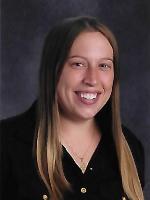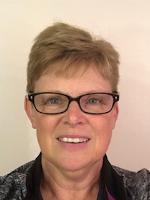

6 Steps to Engage Educators in Virtual Worklabs |
Listen and learn : Snapshot
Snapshots are a pairing of two 20 minute presentations followed by a 5 minute Q & A.
This is presentation 1 of 2, scroll down to see more details.
Other presentations in this group:
Dr. Stefani Boutelier Samantha Gibson Charon Leal Nicole Ludwig| Audience: | Professional developers, Teacher education/higher ed faculty, Coaches |
| Skill level: | Beginner |
| Attendee devices: | Devices useful |
| Attendee device specification: | Smartphone: Android, iOS, Windows Laptop: Chromebook, Mac, PC Tablet: Android, iOS, Windows |
| Topic: | Professional learning |
| ISTE Standards: | For Educators: Collaborator
|
In a heightened time of isolation, organized virtual worklabs encourage educators to continue their path as lifelong learners. Through our experience and success on both ends of virtual worklabs, we have concluded that there are six steps to engaging and productive worklabs for adult learners. The six steps are: 1. Set-up (e.g., comfortable with the platform, flexible timing, working links), 2. Check-in (state goals, share good news, questions, share new content), 3. Work (independent, feedback (e.g., verbal, textual), small group, 1:1), 4. Mid-point check-in (brief reconnect for mental break, questions, share struggles, non-academic content), 5. Work (independent, feedback (e.g., verbal, textual), small group, 1:1), 6. Wrap-up (share progress, next steps). This process provides consistency and holds participants accountable for course work, professional development learning goals, or other independent work in a virtual setting.
The use of virtual worklabs with educators supports best practices for andragogy (adult education) by allowing independence, immediacy, and digital accountability. Best practices for adult learners are often left out of professional development and teacher education courses. As well, it is important to remember adults need differentiation and their learning should be augmented with UDL (Universal Design for Learning) principles (e.g., allowing for choice, offering feedback in multiple forms, multimodality). Setting up virtual worklabs effectively can support these needed elements for adult learners, thus modeling and transferring into our PK-12 classrooms.
Virtual worklabs utilize not only a meeting platform (e.g., Meets, Zoom) but can integrate the use of collaborative docs for goal setting, add-ons or extensions to enhance digital tools used during worklabs (e.g., screencasts for short “how-tos”), or variations in the setting (e.g., breakouts, 1:1, hyflex setting). The options to personalize and repeat engaging virtual worklabs are wide, yet provide a reminder that organized and purposeful virtual settings support all learners. Attendees will leave with a better understanding of how virtual worklabs can be embedded successfully in their own practice and recognize the need to integrate best practices for adult learners in a virtual setting.
-(5 minutes) Introduction; Overview of virtual worklabs and andragogy; understanding who is in the audience (quick poll)
-(15 minutes) Breakdown of the six steps for engaging virtual worklabs
Brief overview of examples and need for UDL and differentiation for adults
(5 minutes) Peer-to-peer discussion: examples of each step for different settings (e.g., professional development, individual coaching, independent goals, teacher education courses, hyflex)
Brief overview of examples and need for UDL and differentiation for adults
-(5 minutes) Questions, Closure
Please see our initial research published below, in addition to supplementary research related to our topic.
Boutelier, S., Gibson, S., Leal, C., & Ludwig, N. (2020). Teacher education during isolation: Virtual worklabs for community and accountability. In Ferdig, R.E., Baumgartner, E., Hartshorne, R., Kaplan-Rakowski, R. & Mouza, C. (Eds.), Teaching, Technology, and Teacher Education During the COVID-19 Pandemic: Stories from the Field (pp. 473-477). Association for the Advancement of Computing in Education (AACE). https://www.learntechlib.org/p/216903/


Samantha Gibson, MA is a bilingual elementary teacher in a two-way immersion program in Grand Rapids, Michigan. She is a proud graduate of Grand Valley State University (BA) and Aquinas College (MA) and holds endorsements in Social Studies, Spanish, and Bilingual Education. Samantha currently serves as the secretary of the West Michigan Alliance of Immersion Educators. One of her proudest professional accomplishments is being recognized as Teacher of the Year by her colleagues. Samantha is a passionate advocate for immersion education and believes all children can benefit from becoming bilingual, biliterate, and culturally competent.


Nicole Ludwig, MA is an instructional coach in Kentwood Public Schools in Michigan. Her teaching career has been spent serving urban student populations and understanding how to best support their growth. She is passionate about changing the narrative that has been written about data use in education.
10 Ways to Make Your Classroom Content Accessible Today!
Boldly Go! Using Virtual Field Trips to Explore Your Curriculum
Creating Learning Spaces With an Inclusive Mindset